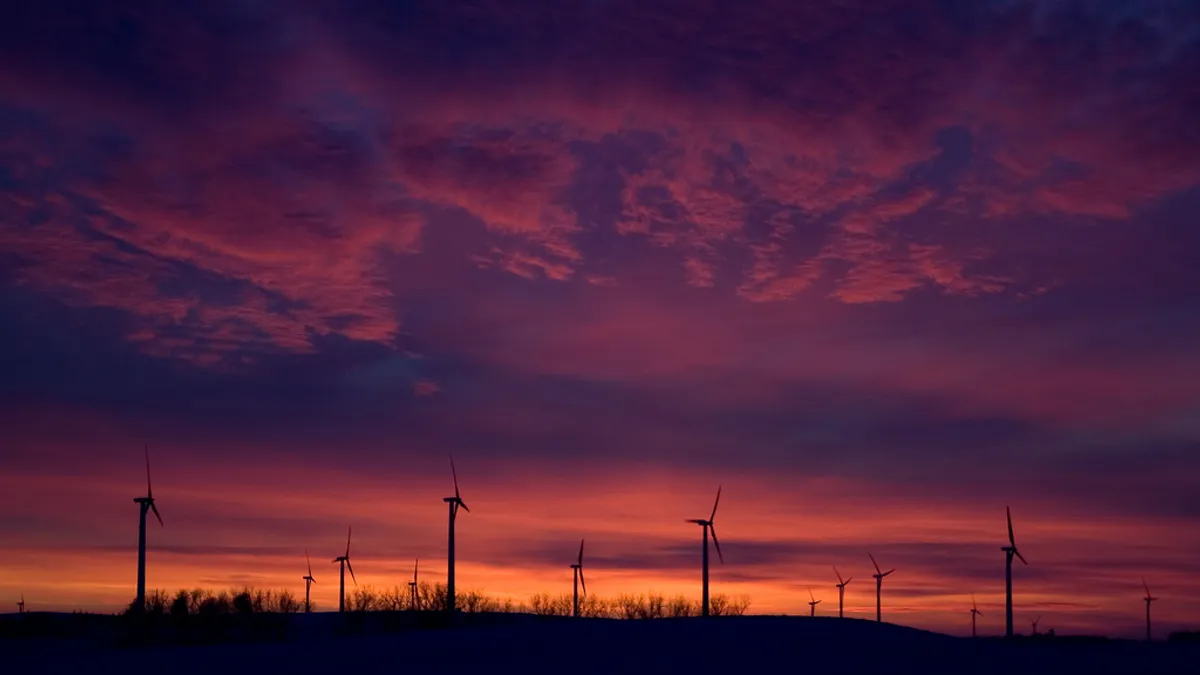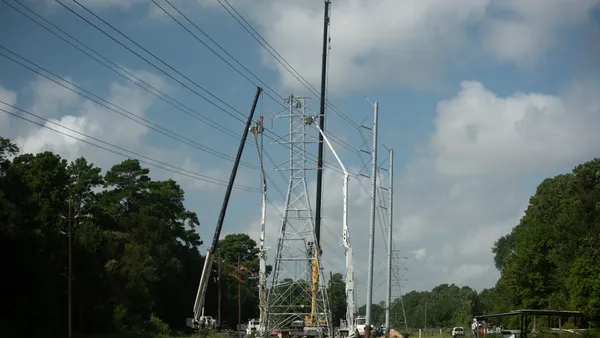Dive Brief:
- Wind and solar will account for 48% of installed capacity and 34% of generation world-wide by 2040, according to new analysis from Bloomberg New Energy Finance.
- The declining cost of renewable energy, lack of demand growth and coal-gas fuel switching will cut the use of coal by 87% in Europe and 45% in the United States, across the same timeline.
- Customer-sited solar will become a significant part of the power mix, according to the report. By 2040, rooftop generation will account for as much as 24% of electricity generation in Australia, 20% in Brazil, 15% in Germany, 12% in Japan, and 5% in the U.S. and India.
Dive Insight:
Bloomberg New Energy Finance attempts to look out almost a quarter century, concluding the rapid adoption of clean energy technologies will continue in the power sector. And while worldwide demand will grow, a decoupling of carbon emissions and economic growth will help keep emissions in check.
Global power demand will grow 58% by 2040, or about 2% annually. "However," write analysts, "we expect the intensity of electricity consumption per unit of GDP to fall by 27% over 2016-40."
Renewables investment will rise to around $400 billion annually, or about 2% to 3% annually. Investment in wind grows faster than solar, at 3.4% per year on average compared with 2.3%. More than $10 trillion will be invested in new generation, and 72% of it will go to renewables: $2.8 trillion for solar and $3.3 trillion into wind.
In the United States last year, non-hydro renewable energy produced about 7% of generation. In milder months, that number can rise to 10%.
Electric vehicle adoption will rise, and they will be commonly use to help balance the grid. Growing EV adoption helps drive the cost of lithium-ion batteries down 73% by 2030.
"In Europe and the U.S., EVs account for 13% and 12% respectively of electricity generation by 2040. Charging
EVs flexibly, when renewables are generating and wholesale prices are low, will help the system adapt to intermittent solar and wind," the report concluded.
Growing EV adoption will also help trim the cost of lithium-ion batteries 73% by 2030, and propel energy storage into a $20 billion per year market by 2040, a " a tenfold increase from today," BNEF said.
"Small-scale batteries installed by households and businesses alongside PV systems accounts for 57% of installed storage capacity worldwide by 2040."















